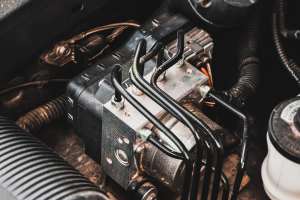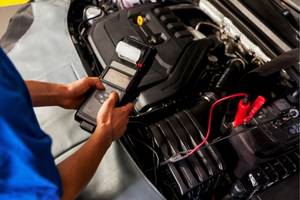Introduction
In the world of automobiles, the Engine Control Module (ECM) is often referred to as the "brain" of the vehicle. This essential component is responsible for managing and enhancing several functions to make sure your car runs smoothly. But what happens when the ECM starts to crash? Engine issues such as poor performance, fuel inefficiency, or an ominous "Check Engine" light could signal problems with this essential module. Fear not, as this practical guide will walk you through the essential steps to diagnose, repair, and maintain your ECM, making sure your vehicle continues to perform at its best.
1. Identify Common ECM Problems
Let's start by understanding what could go wrong with your ECM. It's a complex piece of machinery, but when it comes to common issues, there are a few that stand out:
No Start or Random Shutdown: This is a classic symptom of a failing ECM. It might seem like your vehicle has made up its mind to not start when you want it to run, but understand that there can be an internal issue.
Poor Fuel Economy: If you notice your car guzzling more gas than usual and you are having to make more visits to the gas station, it could be pointing towards a problem in the ECM.
Check Engine Light: This light can signal a wide range of problems, including potential ECM issues.
Performance Issues: If you're experiencing reduced power, poor acceleration, or other performance issues, your ECM might need some attention.
So, you've identified potential problems. What's the next step? How do you confirm if it's an ECM issue or something else? We'll get to that in the next section. Stay tuned for a deep dive into diagnosing ECM issues accurately. After all, an effective "ecm fix" starts with an accurate diagnosis, doesn't it?
2. Diagnose ECM issues accurately
Once you've found out about potential ECM problems, the next step in your "ecm fix" journey is to diagnose these issues accurately. Here's how:
Check for Error Codes
The first line of defence when diagnosing ECM problems is to check for error codes. Most modern vehicles have built-in diagnostic systems that throw up error codes when something goes wrong. Look for these codes and note them down. They'll come in handy when you're trying to pinpoint the exact issue with your ECM.
Inspect the ECM Physically
If the error codes don't provide a clear picture, it's time to roll up your sleeves and do a physical inspection. Open up the hood and search for the ECM. It's usually a rectangular metal or plastic box. Look for obvious signs of damage like corrosion, loose wires, or burned components.
Test ECM Functions
Still no luck? Don't worry! The next step is to test various ECM functions. You'll need a digital multimeter for this. Test the power and ground circuits and check the signal inputs and outputs. If any of these tests fail, it's a sure-shot sign your ECM needs some TLC.
Stick around, because up next we're going to walk through a step-by-step guide to repair your ECM. After all, diagnosis is just the first half of the "ecm fix" equation. The real fun begins with the repair!
3. Repair ECM: Step-by-step guide
With our ECM issues diagnosed accurately, it's time for the exciting part of the "ecm fix" journey - the repair. Let's dive right in.
Clearing the Error Codes
First things first, clear those error codes you got in the beginning. This is like cleaning the slate before you start your repair work. Most OBD-II scanners have a 'clear codes' option. Use this to wipe out the error codes and get a fresh start.
Repairing or Replacing Damaged Components
Next, if your physical inspection revealed any damaged components, now's the time to either repair or replace them. This could be as simple as tightening a loose wire, or as complex as replacing a burnt-out circuit board. If there is a need of replacing the components, with gentle hands and patience do the replacement. Always remember, safety first! Wear gloves and use proper tools.
Re-flashing the ECM
In some cases, the problem might be with the software and not the hardware. Here, re-flashing the ECM might be the solution. Reflashing means reinstalling the software that controls the ECM functions. You'll need a special re-flashing tool for this, and it's usually a good idea to get professional help.
Testing the ECM
Finally, after you've done all the repairs, it's time to test the ECM again. Use your OBD-II scanner to check for error codes. If there aren't any, congratulations! You've successfully completed your "ecm fix".
Up next, we'll talk about how to maintain your ECM for long-term performance. Because a well-maintained ECM is a happy ECM!
4. Maintain ECM for long-term performance
As we wrap up our journey on the "ecm fix" express, let's not forget about the importance of keeping our ECM in tip-top shape. In this section, we'll share some effective strategies for maintaining your ECM's performance.
Regular Diagnostic Checks
Just like having an annual physical check-up, your ECM also needs routine diagnostics. These checks can catch potential issues early before they turn into serious problems. So, invest in a good OBD-II scanner and make those diagnostic checks a part of your regular car maintenance routine.
Keeping Software Up-to-date
Remember when we talked about re-flashing the ECM? That wasn't just for repair. Keeping the ECM software up-to-date is crucial for optimal performance. Newer software versions often come with improvements and bug fixes. So, don't hesitate to upgrade when the opportunity knocks the door.
Physical Inspection and Cleaning
The exterior of the ECM can also impact its performance. Dust and grime can interfere with the ECM's cooling system, leading to overheating. Regular physical inspection and cleaning can help avoid this. Use a soft brush or compressed air to gently clean the ECM.
Regular Vehicle Maintenance
Lastly, a well-maintained vehicle is key to a healthy ECM. Regularly servicing your vehicle and replacing worn-out parts can prevent unnecessary strain on the ECM.
And that, my friend, is how you maintain an ECM for long-term performance. So, buckle up, follow these tips, and enjoy a smooth ride with a well-functioning ECM. No more pesky "ecm fix" issues to worry about!
Conclusion
Successfully managing ECM issues involves more than just addressing sudden problems; it requires a dynamic approach to diagnosis, repair, and maintenance. By understanding common ECM problems, performing precise diagnostics, and carrying out necessary repairs, you can restore your vehicle's performance and avoid future issues. Regular maintenance, including routine diagnostic checks and software updates, plays an important role in increasing the life of your ECM. Accept these practices, and you'll not only fix current problems but also safeguard against future ones, keeping your car running smoothly for the long haul.
FAQs on
Comprehensive Guide to ECM Fix in 2025 : Proven Strategies for Engine Control Module Repair
-
1. What are the common symptoms of a failing ECM?
Ans.
Common symptoms of a failing ECM include a no-start condition or random shutdowns, poor fuel economy, a constant Check Engine light, and overall performance issues such as reduced power or poor acceleration.
-
2. How can I diagnose ECM problems?
Ans.
To diagnose ECM problems, start by checking for error codes using an OBD-II scanner. Next, perform a physical inspection of the ECM for signs of damage or corrosion. Finally, test several ECM functions with a digital multimeter to make sure power, ground circuits, and signal inputs/outputs are functioning properly.
-
3. What should I do if my ECM has damaged components?
Ans.
If you discover damaged components during your inspection, you should either repair or replace them. This may involve tightening loose wires or replacing burnt-out circuit boards. Make sure you use proper tools and follow safety procedures during repairs.
-
4. What is ECM re-flashing, and when is it necessary?
Ans.
ECM re-flashing involves reinstalling the software that controls the ECM functions. It is necessary when the problem is software-related rather than hardware. Re-flashing can fix software bugs or update the system to enhance performance. It often requires a special re-flashing tool and might be best handled by a professional.
-
5. How can I maintain my ECM for long-term performance?
Ans.
Maintain your ECM by performing regular diagnostic checks, keeping the software up-to-date, and performing periodic physical inspections and cleaning. Additionally, make sure regular vehicle maintenance to prevent any unnecessary strain on the ECM.
-
6. Can a malfunctioning ECM affect other parts of my vehicle?
Ans.
Yes, a malfunctioning ECM can impact many vehicle systems, including fuel injection, ignition timing, and emissions control. This can lead to poor performance, increased fuel consumption, and potential damage to other components if not addressed quickly.


